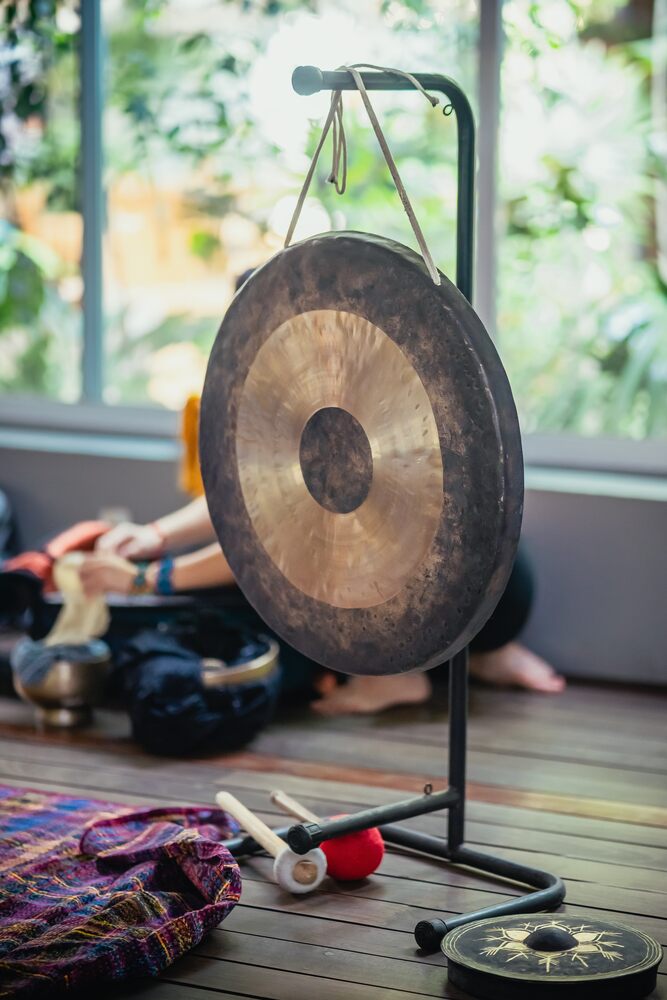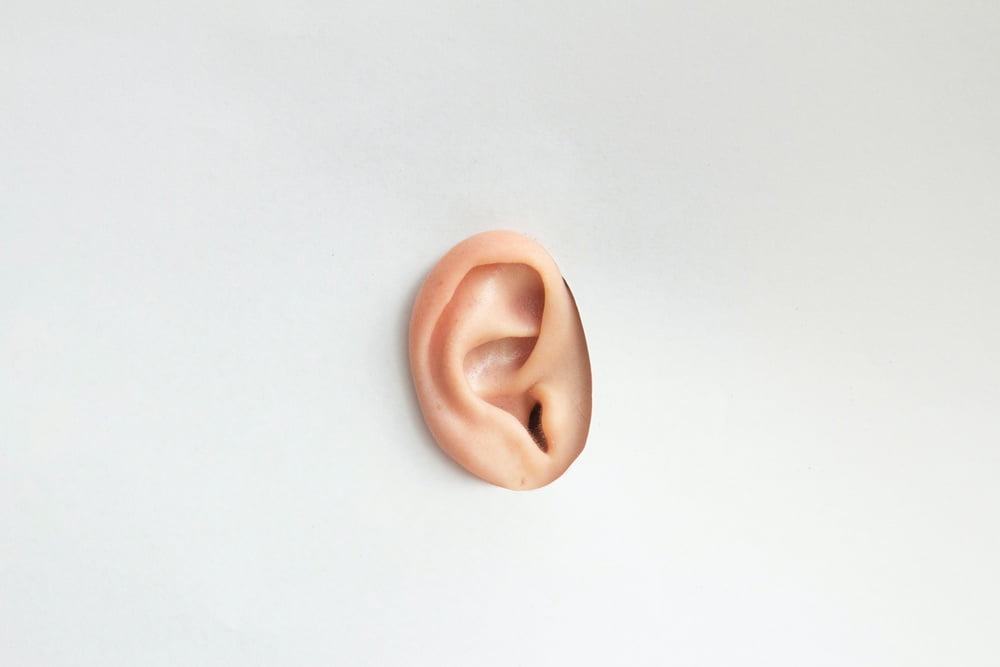In the realm of holistic well-being, the power of sound, music, and healing vibrations transcends boundaries, creating a harmonious synergy for the mind, body, and spirit. The profound impact of sound on our emotional, mental, and physical states is a testament to its potential as a therapeutic tool.
From ancient sound practices to modern sound healing modalities, the exploration of sound’s profound influence on our overall health has taken on new dimensions. In this theme, we delve into the science behind sound, the art of sound therapy, and how various frequencies resonate with our bodies. Discover the profound harmony that music and sound can bring to your life, igniting a deeper connection to the self and the universe.
The science of music, also known as musicology, encompasses a wide range of studies that explore the various aspects of music, including its creation, perception, and effects on the human brain and body.
I recently listened to the Huberman podcast, and it got me thinking about sacred sounds, music, sound healing and yoga.
Key Areas Within The Science Of Music:

The science of music is a multidisciplinary field that draws from physics, psychology, neuroscience, sociology, and more. It offers valuable insights into how music impacts our lives and contributes to our understanding of the human experience.
1. Acoustics:
Acoustics is the branch of physics that deals with the study of sound, including the production, transmission, and reception of sound waves. It explores how musical instruments produce sound and how sound behaves in different environments.
2. Psychology of Music:
This field focuses on how music affects the human mind and emotions. It delves into topics like music perception, emotional responses to music, and the cognitive processes involved in music listening and creation.
3. Neuroscience of Music:
Neuroscience researchers study the brain’s response to music. They use techniques like brain imaging (fMRI and EEG) to understand how music impacts brain function, memory, and emotion regulation.
4. Music Therapy:
Music therapy is an applied field that uses music as a therapeutic tool to address physical, emotional, cognitive, and social needs of individuals. It’s employed in various healthcare settings to support healing and well-being.
5. Music and Emotion:
Research explores how music can evoke specific emotions in listeners and how different musical elements, such as tempo, melody, and harmony, contribute to emotional responses.
6. Music and Memory:
The relationship between music and memory is a fascinating area of study. Music has been shown to enhance memory recall, making it useful in educational and therapeutic contexts.
7. Music and Cultural Studies:
Music is deeply intertwined with culture. This branch of musicology examines how music reflects and shapes cultural identities, values, and societal norms.
8. Music and Technology:
Advances in technology have transformed music production, distribution, and consumption. Researchers in this field explore the impact of technology on the music industry and how it has changed the way we create and experience music.
9. Music and Health:
Studies have shown that music can have therapeutic effects on physical and mental health. It’s used in pain management, stress reduction, and as a complementary therapy for various medical conditions.
10. Ethnomusicology:
Ethnomusicologists study music within its cultural context. They investigate diverse musical traditions from around the world, exploring the social, historical, and cultural significance of music.
Playlists for Yoga Practice:

Playlists play a significant role in enhancing the yoga and meditation experience. They can set the mood and pace of a yoga class, with energising rhythms for dynamic styles like Vinyasa and calming instrumentals for restorative practices.
Some teachers even curate playlists tailored to specific chakras or mantras. Nature sounds are often incorporated, especially when practicing outdoors.
On the other hand, some practitioners and teachers prefer the simplicity of practicing in silence. This allows for deeper introspection, heightened awareness of bodily sensations, and a clearer connection to the breath, making it particularly suitable for meditation.
The choice between music and silence depends on personal preference, the style of practice, and the desired ambiance. Both options have their unique benefits, enhancing the holistic nature of yoga and meditation.
Types of Yoga Playlists
1. Energizing Playlists: These playlists include upbeat and rhythmic music, which is ideal for dynamic yoga styles like Vinyasa or Power Yoga. The music can help set a pace for the class and motivate students to keep moving.
2. Relaxation Playlists: If you’re practicing Restorative or Yin Yoga, calming and soothing music can enhance the relaxation experience. Slow-tempo music with nature sounds or gentle instrumentals is commonly used.
3. Chakra-Specific Playlists: Some yoga teachers curate playlists based on the chakras. For instance, when focusing on heart chakra opening, the music may include sounds related to the heart, such as wind instruments or singing bowls.
4. Mantra Playlists: Mantra-based yoga practices often incorporate chanting or singing along with the music. These playlists typically feature repetitive mantras and kirtan music.
5. Nature Sounds Playlists: Practicing yoga in natural settings is enhanced with playlists that incorporate sounds of nature, such as birdsong, water flowing, or rustling leaves.
Yoga and Meditation with Music vs. in Silence:

Each yogis will have a preference for their practice. Have you noticed the difference within your personal practice when using music or not? Do you create space for both?
Ultimately, whether to practice with music or in silence depends on personal preference and the specific style of yoga or meditation being practiced. Some people may prefer music to create a specific mood or ambiance, while others find silence more conducive to inner stillness and mindfulness.
Teachers often choose music that complements the intention of their class, making it a versatile tool in yoga and meditation.
Yoga With Music:
– Enhanced Atmosphere: Music can create a specific atmosphere and emotional tone for the practice. It can be used to evoke feelings of peace, joy, or introspection.
– Rhythm and Flow: In yoga, music with a beat can help maintain a consistent pace and flow, especially in dynamic styles like Vinyasa.
– Mood Enhancement: For some practitioners, music enhances the overall experience and helps them connect more deeply with the practice.
Yoga In Silence:
– Inner Focus: Practicing in silence allows for deeper introspection and self-awareness. It can help you hear your breath and internal thoughts more clearly.
– Meditation Depth: Meditation, in particular, is often done in silence as it allows you to observe your mind without external distractions.
– Sensitivity to Sensations: Practicing without music can increase your sensitivity to bodily sensations, helping you refine alignment and proprioception.
Music Therapy:

Let’s delve deeper into the fields of music therapy, the psychology of music, and the relationship between music and emotion.
Definition of Music Therapy
Music therapy is an evidence-based therapeutic approach that uses music and its elements—such as melody, rhythm, and harmony—to address physical, emotional, cognitive, and social needs of individuals.
Music Therapy Applications
Music therapy is used in a wide range of settings, including hospitals, rehabilitation centers, schools, and mental health facilities. It can benefit people of all ages, from infants to the elderly, and those with various conditions, including autism, dementia, depression, and physical disabilities.
Goals of Music Therapy
Music therapists work with clients to achieve specific therapeutic goals, which may include improving communication skills, managing pain, reducing stress and anxiety, enhancing memory, and promoting emotional expression.
Music Therapist Methods
Music therapists use a variety of techniques, such as listening to music, singing, playing instruments, and songwriting, tailored to the needs and abilities of each client. These interventions are designed to engage the client and facilitate positive changes.
Music Therapy Research
Music therapy is supported by a growing body of research demonstrating its effectiveness in various clinical and therapeutic contexts. Researchers continue to explore its potential and refine techniques.
Psychology of Music:
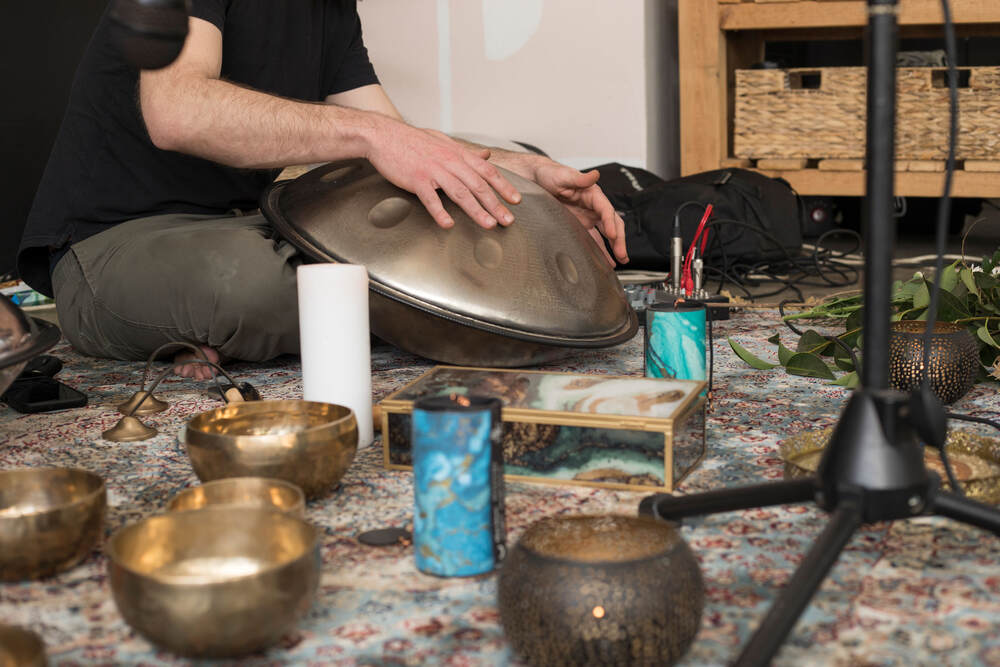
– Music Perception: This area explores how we perceive and process music, including the recognition of melodies, rhythms, and harmonies. Research in this field investigates how the brain deciphers musical patterns.
– Emotion and Music: Studies in this subfield examine the strong link between music and emotion. Music can evoke a wide range of emotional responses, from joy and excitement to sadness and nostalgia. Researchers investigate the mechanisms behind these emotional reactions.
– Cognitive Processes: The psychology of music delves into the cognitive processes involved in music listening and creation. This includes memory, attention, and problem-solving skills related to music.
– Music and Memory: Music has a unique ability to trigger memories. Research in this area explores how and why music is closely tied to memory recall. It has practical applications in improving memory and cognitive functioning.
– Music Therapy: The psychology of music also overlaps with music therapy, as it examines how music can be used as a therapeutic tool to address psychological and emotional issues.
Music and Emotion:
– Emotion Elicitation: Researchers study how different musical elements, such as tempo, key, and dynamics, influence emotional responses in listeners. For example, fast tempos and major keys often convey happiness and excitement, while slow tempos and minor keys may evoke sadness or melancholy.
– Cross-Cultural Emotions: Music’s emotional impact is not limited to one culture; it transcends boundaries. Studies investigate how people from diverse cultures perceive and experience emotions through music.
– Psychophysiological Responses: This area explores how music affects the body’s physiological responses, including heart rate, blood pressure, and skin conductance. Researchers measure these responses to better understand the connection between music and emotion.
– Music and Mood Regulation: Music is a common tool for regulating mood. Whether it’s listening to uplifting music to improve mood or choosing calming music to reduce stress, individuals often use music as a means of emotional self-regulation.
– Clinical Applications: Understanding how music influences emotion has practical applications in clinical settings. Music therapy, for instance, uses music to help individuals manage and express their emotions, making it a valuable therapeutic approach.
The psychology of music is a rich and multidimensional field that offers insights into how music affects our minds and emotions, and how it can be used to improve well-being and address psychological challenges. Researchers continue to explore its complexities and applications.
Frequencies and vibrations play a crucial role in various healing modalities, including music therapy, healing, yoga, and meditation.
Frequencies and Vibrations in Healing:

Sound Healing: Sound healing is a holistic practice that uses the power of sound vibrations to promote physical, emotional, and mental well-being. Different frequencies are believed to resonate with specific parts of the body and energy centers (chakras). For example:
– 432 Hz: Often associated with the heart chakra, 432 Hz is considered a healing frequency that promotes emotional balance and harmony.
– 528 Hz: Known as the “Love Frequency” or “DNA Repair Frequency,” 528 Hz is believed to have healing properties that can positively impact DNA and cellular function.
– 639 Hz: Associated with the throat and heart chakras, 639 Hz is believed to promote communication, harmonious relationships, and emotional healing.
– Binaural Beats: Binaural beats are a form of sound therapy that involves playing two slightly different frequencies in each ear. The brain perceives a third frequency, known as the binaural beat, which can have various effects, such as promoting relaxation or enhancing focus.
Connection to Music Therapy:
– Frequency Selection: Music therapists select specific frequencies and musical elements to target therapeutic goals. For example, slow and calming music with low frequencies may be used to reduce anxiety and stress, while upbeat rhythms with higher frequencies can boost energy and motivation.
– Emotional Expression: Music therapy encourages emotional expression through music. Clients may use various instruments and vocalisations to release emotions, and therapists can guide them to select music that resonates with their feelings.
– Pain Management: Certain frequencies and music patterns have been found effective in pain management. Music therapy can be used to distract from pain, reduce the perception of pain, and improve overall well-being.
Healing and Yoga:

– Chakra Alignment: In yogic practices, each chakra is associated with specific frequencies or mantras. Chanting mantras at these frequencies during meditation or yoga is believed to balance and align the chakras, promoting physical and emotional healing.
– Solfeggio Frequencies: The Solfeggio frequencies, including 396 Hz, 417 Hz, 528 Hz, and others, are used in healing practices and yoga to address various physical and emotional issues. They are believed to resonate with specific aspects of healing and transformation.
Meditation:
– Deep Meditation: Meditation practices often incorporate soundscapes or chants at specific frequencies to deepen the meditative experience. These frequencies can help participants reach altered states of consciousness and facilitate inner exploration.
– Mind-Body Connection: Meditation with sound frequencies aims to enhance the mind-body connection, allowing practitioners to tap into their inner wisdom and healing abilities.
Music: A Holistic Approach to Wellness
Incorporating frequencies and vibrations into healing, music therapy, yoga, and meditation can offer a holistic approach to wellness. It’s essential to remember that individual responses to frequencies and music may vary, so practitioners often choose what resonates best with their unique needs and preferences.
Whether through the soothing sounds of singing bowls, guided sound meditations, Binaural beats, white noise or intentional music selection, the power of frequencies and vibrations can be harnessed for personal growth and well-being.
Understanding Frequencies and Vibrations

Understanding vibrations and frequencies on a deeper level involves recognising their significance in various aspects of our lives, including our physical and emotional well-being.
Key Points To Consider:
1. Energetic Nature of the Universe: At its core, the universe is composed of energy, and everything within it vibrates at specific frequencies. This includes not only tangible matter like atoms and molecules but also intangible forces like emotions and thoughts. Recognising this interconnected web of energy can foster a sense of unity and interconnectedness.
2. Resonance: Resonance occurs when two frequencies align and harmonise with each other. In our lives, we often seek resonance in our relationships, activities, and experiences. When we resonate with something or someone, it can lead to a profound sense of connection and well-being.
3. Emotional and Mental Frequencies: Emotions and thoughts are not just abstract concepts; they have vibrational frequencies. For example, emotions like love and gratitude are associated with higher vibrational frequencies, while fear and anger are associated with lower ones. Becoming aware of your emotional and mental states and how they influence your vibrations can empower you to make positive shifts.
4. Sound Healing: Sound, including music, singing bowls, and chants, can influence our vibrations and promote healing. Sound therapy utilises specific frequencies to restore balance and harmony within the body and mind. Exploring sound healing practices can be a transformative experience.

5. Mind-Body Connection: Our bodies also have vibrational frequencies. Each organ, tissue, and cell resonates at a particular frequency. Practices like yoga, meditation, and energy healing aim to align and balance these frequencies to promote physical and emotional well-being.
6. Intuition and Sensitivity: As you deepen your understanding of vibrations and frequencies, you may find that your intuition and sensitivity to energy become more heightened. This can lead to a greater capacity for empathy and a better understanding of your own needs and those of others.
7. Holistic Health: Holistic health practices consider the interconnectedness of mind, body, and spirit. They often incorporate vibrational healing modalities to support overall well-being. By embracing a holistic approach to health, you can explore various tools and techniques for raising your vibrations.
8. Self-Care and Alignment: Recognise the importance of self-care in maintaining high vibrations. Practices like meditation, mindful breathing, spending time in nature, and engaging in activities that bring you joy can help you align with higher frequencies and stay attuned to your inner wisdom.
9. Positive Manifestation: Understanding vibrations and frequencies can be applied to manifestation practices. By aligning your thoughts, emotions, and intentions with the vibrational frequency of your desired outcomes, you can enhance your ability to manifest your goals and dreams.
10. Continuous Exploration: The study of vibrations and frequencies is a lifelong journey. It’s about exploring and experiencing the subtle energies that permeate our existence. Stay open to new practices and perspectives that resonate with you, and trust your intuition as you navigate this fascinating realm.
By delving into the world of vibrations and frequencies, you can gain deeper insights into the interconnectedness of all things and the profound impact they have on your life. This understanding can empower you to make conscious choices that align with your highest vibrational potential. For instance…. A morning ritual, how do you set the “tone” of your day?
The Science of Music and Sound Healing:

– Harmonic Resonance: Music operates on the principle of harmonic resonance, where frequencies interact and create harmonious vibrations. This resonance can influence our emotions, thoughts, and even our physical well-being.
– Brainwave Entrainment: Music has the power to synchronise brainwaves. Different types of music can stimulate various brainwave states, such as alpha (relaxation), beta (focus), theta (meditative), and delta (deep sleep). Sound healing practices use specific frequencies to induce desired brainwave states for healing and relaxation.
Vibrations and Frequencies in Medicine:
– Biofield and Vibrational Medicine: Vibrational medicine recognises that the body’s energy field, composed of vibrations, plays a vital role in health. Therapies like acupuncture, Reiki, and homeopathy work with these energy vibrations to promote healing and balance.
– Sound Therapy: Sound therapy employs specific frequencies and vibrations to address physical and emotional issues. For example, low-frequency vibrations can aid bone and tissue healing, while higher frequencies may target emotional blockages.
Hz and Body Part Resonance:
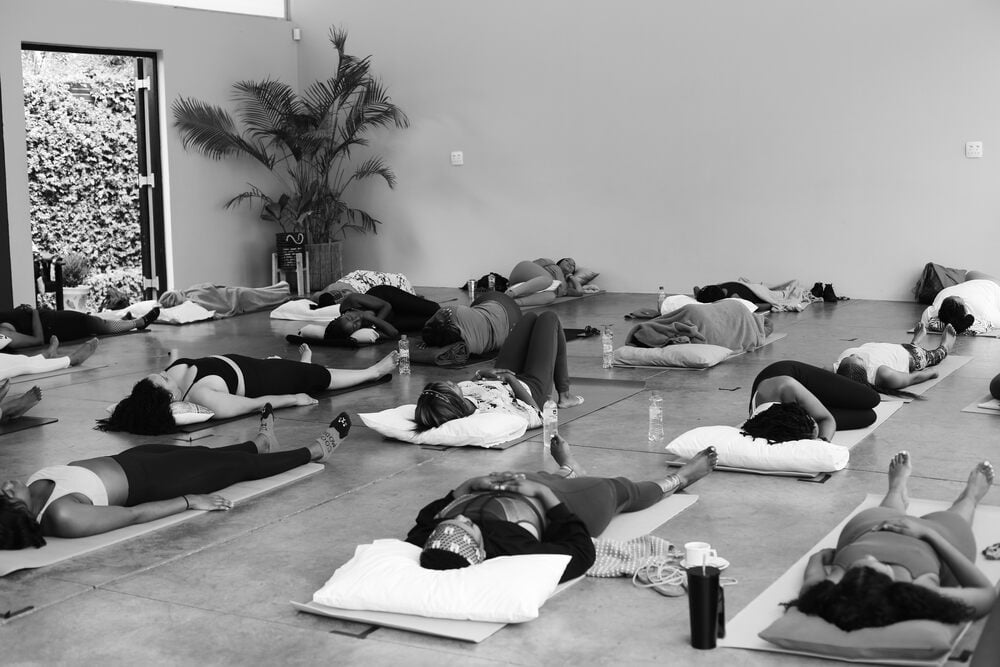
– 396 Hz: Associated with the root chakra, it resonates with the adrenals, legs, feet, and lower back. It’s thought to release fear and guilt.
– 528 Hz: Known as the “love frequency,” it’s linked to the heart chakra and influences the heart, circulatory system, and overall well-being.
– 639 Hz: Relates to the heart and throat chakras, affecting the heart, lungs, thyroid, and throat. It’s associated with harmonious relationships and communication.
– 741 Hz: Connected to the throat chakra and influences the throat, thyroid, and immune system. It’s believed to cleanse cells and promote self-expression.
– 852 Hz: Tied to the third eye chakra, it resonates with the head, pineal gland, and neurological system. It’s associated with intuition and spiritual insight.
Hz Frequencies and the Body

Let’s delve deeper into the Hz frequencies and their physical and physiological resonance with specific body parts:
396 Hz – Liberating Guilt and Fear:
– Root Chakra Connection: 396 Hz resonates with the root chakra, which is located at the base of the spine. The root chakra governs survival instincts, security, and our connection to the physical world.
– Physical Resonance: This frequency is associated with releasing tension in the lower back, legs, and feet. It is believed to promote healing in these areas.
– Emotional Resonance: 396 Hz is often used to address feelings of guilt and fear, promoting a sense of security and grounding.
528 Hz – Love and DNA Repair:
– Heart Chakra Connection: 528 Hz is linked to the heart chakra, which governs love, compassion, and emotional well-being.
– Physical Resonance: It is believed to influence the heart and circulatory system positively.
– Physiological Resonance: Some studies suggest that 528 Hz may play a role in DNA repair processes and could have healing effects at the cellular level.
– Emotional Resonance: Often referred to as the “love frequency,” it promotes emotional balance, harmony, and self-love.
639 Hz – Connection and Communication:
– Heart and Throat Chakra Connection: 639 Hz bridges the heart and throat chakras, fostering harmonious relationships and effective communication.
– Physical Resonance: It may have an impact on the throat, thyroid, and respiratory system.
– Emotional Resonance: This frequency is associated with improving interpersonal relationships, forgiveness, and resolving conflicts through healthy communication.
741 Hz – Expression and Purification:
– Throat Chakra Connection: 741 Hz is related to the throat chakra, influencing self-expression and communication.
– Physical Resonance: It is believed to benefit the throat, thyroid, and immune system.
– Emotional Resonance: 741 Hz is often used for emotional healing, purification, and clarity of thought. It may help release emotional blockages.
852 Hz – Awakening Intuition:
– Third Eye Chakra Connection: 852 Hz resonates with the third eye chakra, associated with intuition, insight, and spiritual awareness.
– Physical Resonance: It may influence the head, pineal gland, and neurological system.
– Emotional Resonance: This frequency is used to enhance intuition and connect with higher levels of consciousness. It can promote deep spiritual insight.
Understanding the resonance of these frequencies with specific chakras and body parts provides insights into their potential healing properties. While scientific research on these claims is ongoing, many individuals have reported positive experiences with sound healing practices incorporating these frequencies. These practices aim to restore balance and promote overall well-being at physical, emotional, and spiritual levels.
Sound healing with Himalayan singing bowls

Have a profound impact on mental and emotional well-being. Each chakra is associated with a specific note or frequency, and the vibrational qualities of singing bowls can help balance and align these energy centers. Those that have been able to join me on my Sound & sleep journeys will know I have touched on this lightly, Bute here is what you need to know…
Root Chakra (Muladhara) – C Note (256 Hz):
– Located at the base of the spine, the root chakra is associated with feelings of safety, security, and survival instincts. The C note helps ground and stabilise this chakra.
Sacral Chakra (Swadhisthana) – D Note (288 Hz):
– Positioned just below the navel, the sacral chakra governs emotions, creativity, and sensuality. The D note can stimulate creative and emotional expression.
Solar Plexus Chakra (Manipura) – E Note (320 Hz):
– The solar plexus chakra, located in the upper abdomen, is linked to personal power, self-esteem, and confidence. The E note can boost self-confidence and inner strength.
Heart Chakra (Anahata) – F Note (341.3 Hz):
– The heart chakra, located in the chest, is associated with love, compassion, and emotional healing. The F note can open the heart to love and forgiveness.
Throat Chakra (Vishuddha) – G Note (384 Hz):
– Positioned at the throat, the throat chakra governs communication and self-expression. The G note can enhance clarity and effective communication.
Third Eye Chakra (Ajna) – A Note (426.7 Hz):
– The third eye chakra, located in the forehead, is linked to intuition, insight, and higher consciousness. The A note can deepen intuition and spiritual awareness.
Crown Chakra (Sahasrara) – B Note (480 Hz):
– The crown chakra, situated at the top of the head, represents connection to the divine and higher states of consciousness. The B note can facilitate spiritual awakening and unity.
Benefits of Sound Healing
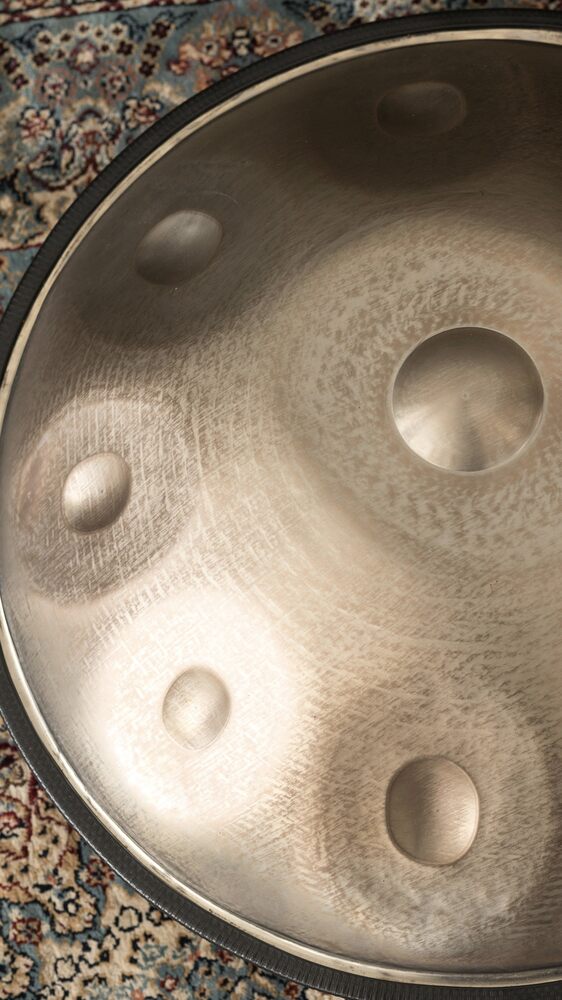

Sound healing with Himalayan singing bowls involves striking or playing the bowls to produce soothing vibrations and tones. These vibrations resonate with the body’s energy centers, helping to balance and clear any blockages.
Here’s how it can benefit mental and emotional well-being:
1. Stress Reduction: The calming sound of singing bowls can induce a state of relaxation, reducing stress and anxiety. The vibrations promote a sense of inner peace.
2. Emotional Release: Sound healing can release emotional blockages stored in the chakras. It allows individuals to process and release emotions, leading to emotional healing.
3. Enhanced Mood: Listening to singing bowls can uplift one’s mood and increase feelings of joy and contentment. It promotes a positive emotional state.
4. Improved Focus: Sound healing sessions can enhance mental clarity and concentration, helping individuals focus and make decisions with greater ease.
5. Balanced Energy: By aligning and balancing the chakras, sound healing can restore harmony to the body’s energy system, promoting overall well-being.
6. Deep Relaxation: The deep relaxation induced by sound healing can lead to better sleep and reduced symptoms of anxiety and depression.
It’s important to note that individual experiences with sound healing may vary, but many people find it to be a powerful tool for enhancing mental and emotional health. It has the ability to complement other holistic wellness practices and therapies to support overall well-being.

You all know, and if you don’t now you do, I love combining sound therapy with a meditation technique called Yoga Nidra (The waking Sleep). With that practice I always invite each individual to let go of any expectations whether you have or haven’t experienced a sleep & sound Journey.
Each experience will be different depending on the day, where you are mentally, emotionally and physically just like with your asana practice. Meet youself where you are and embrace the journey as it meets you.
Sound Healing and Yoga Nidra

Sound healing with Himalayan singing bowls is the perfect companion to Yoga Nidra by enhancing the depth and effectiveness of the practice. Here’s how they work together:
Deep Relaxation:
Both sound healing and Yoga Nidra are deeply relaxing practices. The soothing vibrations of singing bowls help participants enter a state of relaxation more quickly, which is beneficial when transitioning into the Yoga Nidra practice.
Enhanced Focus:
Sound healing can help clear the mind of mental chatter and distractions, allowing participants to enter the Yoga Nidra state of conscious relaxation with greater ease. This enhances the effectiveness of the guided meditation.
Chakra Alignment:
The specific frequencies of singing bowls correspond to the chakras, aligning and balancing them. When participants enter the Yoga Nidra state, their chakras are more receptive to healing and alignment, amplifying the benefits.
Emotional Release:
Sound healing can release emotional blockages, making it easier for participants to process and release emotions during the Yoga Nidra practice. This can lead to deeper emotional healing and catharsis.
Heightened Awareness:
Singing bowls can enhance sensory awareness and receptivity. When combined with Yoga Nidra’s body scan and guided visualisation, participants may experience a heightened sense of awareness, leading to a more profound inner journey.
Spiritual Connection:
Both practices can foster a sense of spiritual connection and inner exploration. The vibrations of the singing bowls can create an atmosphere conducive to transcendent experiences during Yoga Nidra.
Integration:
After a Yoga Nidra session, the gentle sound healing with singing bowls can help participants gradually transition back to a waking state while maintaining a sense of calm and centeredness.
The Power of Yoga Nidra

Overall, the combination of sound healing with Himalayan singing bowls and Yoga Nidra can create a profound and transformative experience, offering participants a deeper journey into relaxation, self-discovery, and healing.
My Yoga Nidra & Nada (sound) usually also include other instruments like the rainstick and chimes, and when we are blessed to have a collaborative sound healer making use of the Handpan or gong.
Adding instruments like Tingsha bells, rainsticks, chimes, gongs, or Handpans can further elevate the sound journey and enhance the overall experience of sound healing. Each of these instruments brings unique qualities to the session:
- Tingsha Bells: Tingsha bells produce a clear, high-pitched sound when struck together. They are often used to mark the beginning and end of a session. The sharp, pure tones help clear the mind and create a sacred space for the sound healing experience.
- Rainsticks: Rainsticks produce a gentle, soothing sound that resembles falling rain. Their sound is calming and can help participants relax and enter a meditative state. The gradual, rhythmic sound of a rainstick can also mimic the flow of energy, promoting a sense of fluidity and balance.
- Chimes: Wind chimes or other chimes create melodious and harmonious sounds. They are often used to evoke a sense of tranquility and serenity. Chimes can add a musical quality to the sound journey, enhancing its emotional impact.
- Gong: Gongs produce powerful, resonant vibrations that can penetrate deeply into the body and psyche. They are known for their ability to release tension, induce states of deep relaxation, and even lead to transformative experiences. Gongs add a rich and dynamic dimension to the sound healing journey.
- Handpan: Handpans are melodic percussion instruments with a unique, ethereal sound. They are versatile and can create a wide range of tones and moods. Handpans can evoke feelings of serenity, introspection, and wonder, making them a valuable addition to the sound healing experience.
The combination of these instruments, along with Himalayan singing bowls, can create a multi-layered and immersive sound journey. Practitioners can strategically use each instrument to evoke specific emotions, sensations, or states of consciousness during the session. The variety of sounds and vibrations contributes to a rich and transformative experience, enhancing relaxation, inner exploration, and healing.
As with any sound healing practice, the skill and intention of the facilitator play a crucial role in creating a safe and supportive environment for participants to benefit fully from the instruments’ therapeutic effects.
Morning Ritual of Surrender:
– Starting the day with a morning ritual of surrender involves taking a few moments to release stress, tension, and any negative thoughts or emotions that may have accumulated overnight. This practice helps set a positive tone for the day and promotes mental clarity and emotional balance.
Morning Grounding and Earth Connection:
– Starting your day by intentionally lying on the floor and connecting with the Earth is a powerful way to cultivate presence and mindfulness. In today’s fast-paced world, it’s all too easy to rush into the day’s obligations without taking a moment to center yourself.
– The Earth, with its grounding energy, provides a sense of stability and calm. It’s a reminder of our interconnectedness with nature and the importance of staying rooted, especially in moments of stress or uncertainty.
– By softening tension and letting go of mental chatter, you created space for inner peace and stillness. This practice can help you navigate the day with greater clarity and a sense of inner equilibrium.
Embodiment and Presence:
– The conscious choice to inhabit your body differently reflects the essence of embodiment. It’s a practice of being fully present in your physical form, experiencing sensations, emotions, and thoughts without judgment or resistance.
– Embodiment can enhance self-awareness and self-acceptance. It allows you to listen to the wisdom of your body, which often communicates through subtle cues and sensations.
– Surrendering to the moment and embracing stillness can lead to a deeper sense of inner peace and a more harmonious relationship with your inner world.

Daily Mindfulness Rituals:
– Incorporating mindfulness rituals into your daily routine, even for a few moments, can set a positive tone for the day. It’s a way of honouring the sacredness of each moment and the connection to the Earth.
– Consider exploring other grounding practices like mindful walking in nature, meditation, or breath-work. These can further deepen your connection to the present moment and enhance your well-being.
Your morning practice serves as a reminder that within the busyness of life, there are moments of stillness and connection waiting to be embraced. By nurturing this connection with yourself and the Earth, you’re nurturing your own well-being and inviting more presence and peace into your day.

Mental Health Day and Awareness Month:
– On Mental Health Day and during Mental Health Awareness Month, it’s essential to recognise the role of sound, music, and vibrational therapies in promoting mental well-being. Sound healing and mindfulness practices can be powerful tools for managing stress, anxiety, and depression.
– The understanding of how specific frequencies and vibrations affect mental states underscores the importance of incorporating these practices into mental health and self-care routines. They can provide a sense of calm, relaxation, and inner peace.
By integrating these concepts, you can develop a holistic approach to well-being that includes the healing power of sound and vibrations, along with the practice of morning surrender, to nurture your mental and emotional health.
This synergy of science, the sacred sounds of music, and self-care rituals offers a path to greater balance and harmony in your life.
Join me for Mental Health Awareness Month:
Sacred Sounds, Music and Healing
As we conclude our exploration of the profound interplay between sound, music, and healing, we find ourselves in tune with a timeless truth—vibrations reverberate through the very core of our existence.
The symphony of life, with its myriad frequencies and rhythms, offers us a path to balance, transformation, and well-being.
Whether through the resonance of Himalayan singing bowls, the gentle strumming of a guitar, or the transcendental power of meditation, sound has the capacity to heal, elevate, and connect. It reminds us that, in the tapestry of existence, we are both the instrument and the conductor, capable of orchestrating our own journey toward harmony and inner peace.
May the melodies of this theme resonate within you, guiding you on your unique path of healing and self-discovery.
